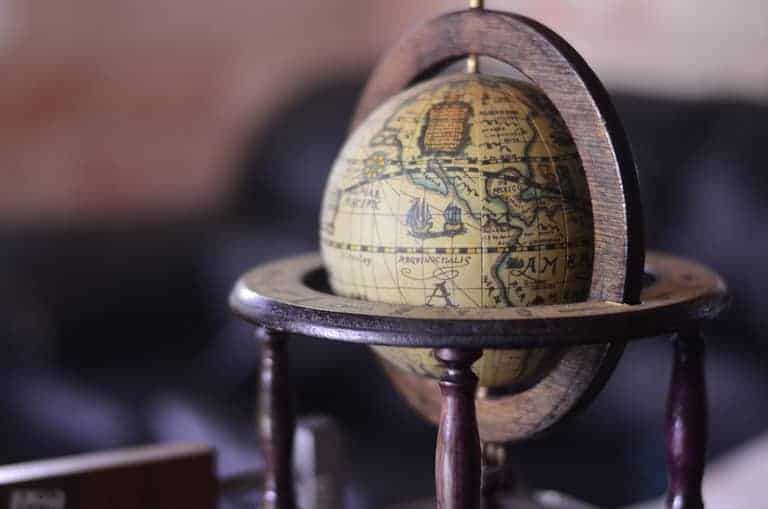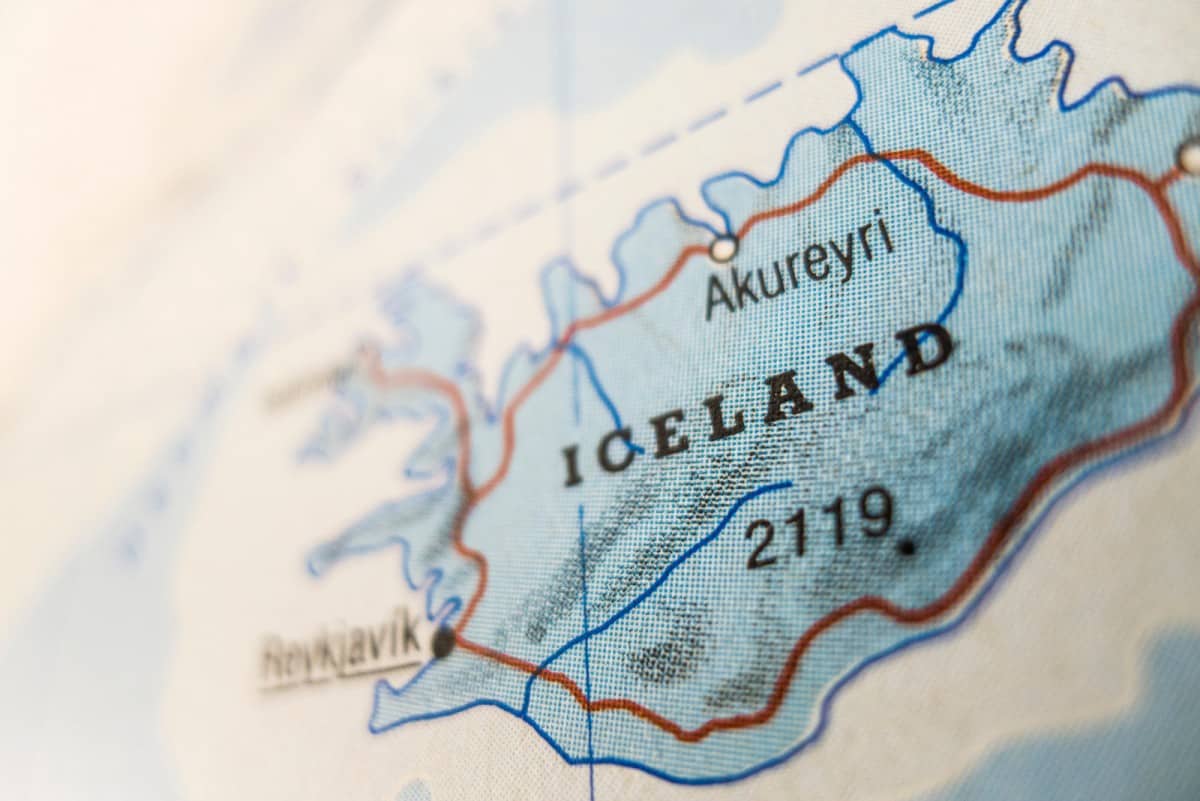Whether or not Scandinavia is a part of Europe is a common question. Many people know Scandinavia is the name of a geographic region, and that Europe is one of the seven continents.
They may even be aware that those two places are in the same part of the world. So what is the relationship between them?
The region of Scandinavia is in the continent of Europe. The name “Scandinavia” is an unofficial title for a part of northern Europe.
The narrower use of the term “Scandinavia” collectively refers to the countries of Norway, Sweden, and Denmark, all three of which are nations on the European continent.
The broader use of the name “Scandinavia” refers to the three countries already mentioned, as well as Finland, Iceland, and the Faroe Islands, each of which is also considered a part of Europe.
Keep reading to learn more.
The region of Scandinavia is one of the happiest places on Earth. See Why Are Scandinavian Countries So Happy? to learn more.

European boundaries include Scandinavia
As modern maps illustrate, the countries of Scandinavia exist within the boundaries of Europe.
- The Atlantic Ocean borders Europe to the west, though there are many seas and bays close to the continent.
- The Arctic Ocean is the northern boundary of the continent.
- The continent of Asia provides the land boundary to the east, yet it is a border which has geographical variety, such mountains, seas, and other waterways.
All Scandinavian countries reside within the commonly accepted boundaries of Europe, on the northernmost part of the continent.
Scandinavia: The Northern Region of Europe
Europe is often subdivided into different regions in relation to geography, history, economy, religion, politics, and other issues.
Some hold that identifying such regional categories is helpful in order to study and discuss similarities and differences in different parts of the continent.
Examples of similarities and differences can be seen using religion as an example:
- Roman Catholicism impacted Southern Europe (e.g. Portugal, Spain, Italy) differently than Eastern Europe (e.g. Poland, Romania, Hungry) and Western Europe (e.g. Ireland, Germany, France).
- Eastern Orthodoxy impacted Eastern Europe differently than Southern Europe and Western Europe.
- Protestant Lutheranism impacted Western Europe differently than Southern Europe and Eastern Europe.
“Northern Europe” is a common category when Europe is subdivided for the purposes of study and discussion, because of their shared history and culture.
However, not all definitions of “Northern Europe” are the same.
Scandinavian countries, including Finland, Iceland, and the Faroe Islands, are almost always classified as northern Europe, but other nations or regions may be implied as well, such as the British Isles and northern Germany, depending on context. [1]
The British Isles belong to Great Britain, which is not considered northern Europe.
Likewise, Germany shares its northern border with Denmark. Denmark is considered northern Europe, but Germany is not.
Many people have heard the name “Scandinavia,” but what exactly is it? See Is Scandinavia a Country, Continent, or Something Else? to learn more.

The borders of northern Europe
Scandinavian countries occupy the northwest corner of the European continent.
- The Arctic Ocean lies to the north, providing the northern border for Norway and Sweden.
- The Atlantic Ocean lies to the west, providing the western border Norway and Denmark, though many seas and bays lie close to shore.
- Norway and Sweden lie on the Scandinavian Peninsula with the Norwegian Sea to the west and the Baltic Sea to the east.
- The northernmost land mass of Norway and Sweden share a border with the northwest corner of Finland. Russia lies on Finland’s eastern border.
- Germany borders Denmark’s primary landmass to the south. Iceland is Europe’s largest northwest island.
What about Greenland? People often wonder about Greenland. The island, which is an independent region of Denmark, is considered part of the North American continent, not Europe. Geographically, the island lies closer to North America, but culturally it has more in common with Scandinavian countries.
European language families in Scandinavia
Language is an important connection between Scandinavian countries and their European neighbors because the similarities that exist are a result of their shared history and culture.
The majority languages in Norway (Norwegian), Sweden (Swedish), Denmark (Danish), Iceland (Icelandic), and the Faroe Islands (Faroese) are North Germanic languages, rooted in the Germanic and Indo-European language base. [2]
These languages are sometimes grouped together and called “Scandinavian languages” because of their similarities. Norwegian, Swedish, and Danish are so similar, that they are referred to as “mutually intelligible,” which is a term that refers to the fact that people who speak one of the languages can often understand someone who speaks one of the others.
In linguistics, mutual intelligibility is a relationship between languages or dialects in which speakers of different but related varieties can readily understand each other without prior familiarity or special effort. [3]
However, the majority language in Finland, Finnish, stems from the Uralic language base.
And Sami, a native language spoken by the Sami people of northern Norway, Sweden, and Finland, is also the product of a Uralic language base. Historians aren’t certain about the history of Finnish:
Several theories exist as to the geographic origin of Finnish and the other Uralic languages.
The most widely held view is that they originated as a Proto-Uralic language somewhere in the boreal forest belt around the Ural Mountains region and/or the bend of the middle Volga.
The strong case for Proto-Uralic is supported by common vocabulary with regularities in sound correspondences, as well as by the fact that the Uralic languages have many similarities in structure and grammar. [4]
Danish, Norwegian, and Swedish people are similar, but how similar? See Is Scandinavia a Language? to learn more.
European land in Scandinavia
There are approximately 50 countries in Europe. Three Scandinavia countries are in the top ten for landmass:
- Sweden possess the 7th largest land mass of European countries with 450,000+ km, 173,000+ square miles
- Norway posses the 8th largest land mass of European countries with 385,000+ km, 148,000+ square miles
- Finland possess the 10th largest land mass of European countries with 336,000+ km, 130,000+ square miles
- Iceland possess the 18th largest land mass with 103,000+ km, 40,000 square miles
- Denmark possess the 32nd largest land mass with 43,000+ km, 16,000 square miles
- The Faroe Islands has one of the smallest land masses with 1,400+ km, 540 square miles
The population of Scandinavian Europe
Many European nations have much smaller landmasses than Scandinavian countries, but they have more people residing in them.
In other words, Scandinavian countries have more unoccupied land than many other European countries.
This is due, in part, to geography as mountains and snow cover the land in various areas. There are also historical reasons, such as settlement patterns from early explorers.
Below is the population, and population density, of Scandinavian countries:
- Sweden is the 17th most populous European country with 17,000,000+ people; the population density is 22 people per square kilometer (0.6 miles).
- Denmark is the 25th most populous European country with 5,700,000+ people; the population density is 122 people per square kilometer.
- Finland is the 26th most populous European country with 5,500,000+ people; the population density is 16 people per square kilometer.
- Norway is the 28th most populous European country with 5,200,000+ people; the population density is 15 people per square kilometer.
- Iceland is the 45th most populous European country with 350,000+ people; the population density is 3 people per square kilometer.
- The Faroe Islands are one of the least populous European countries with 50,000+ people; the population density is 35 people per square kilometer.
Scandinavia and the European Union
One modern expression of European political unity is The European Union.
The EU is a political and economic partnership whose member nations have entered into collective policy agreements on various issues.
Some Scandinavian countries are part of the EU and some are not. [5]
Sweden, Denmark, and Finland are a part of the continental partnership. Denmark joined the partnership in 1973 when it existed under a different name, the European Economic Community. Sweden and Finland joined in 1995.
Norway and Iceland are not part of the European Union, though they both participate in some of the union’s trade practices.
They are not a part of the partnership due to various political and cultural issues, but a relationship between the parties is cordial: [6]
Even though Norway rejected EU membership in the referendums in 1972 and 1994, they still have a close relationship with the EU through the EEA Agreement and several other bilateral agreements. [7]
The people of Denmark, Norway, and Sweden look similar. See Is Scandinavia a Race? to learn more.
References:
[1] Source
[2] Source
[3] Source
[4] Source
[5] Source
[6] Source
[7] Source
